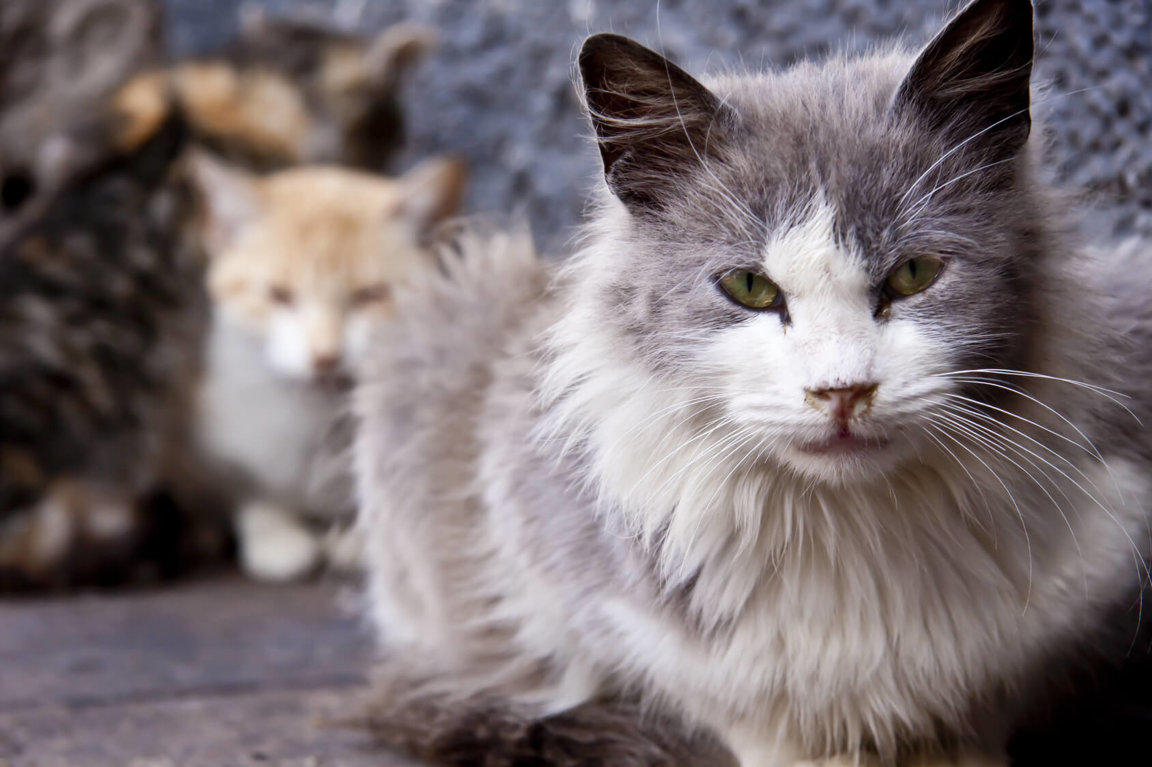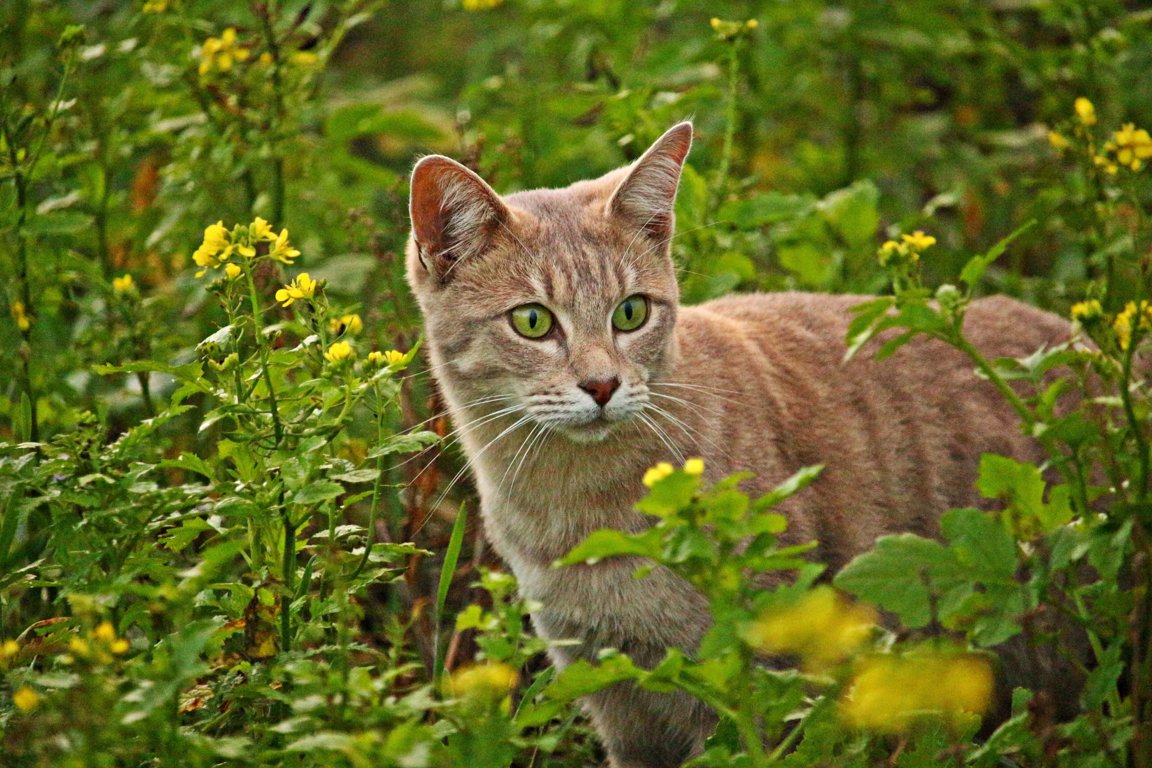
Feral Cats
The topic of feral cat predation on wildlife, especially birds, has become a battleground of competing opinions on whether feral cats should be trapped, neutered and returned to their environment, or if they should be viewed as invasive species and eradicated. A careful analysis of the science concludes there is no strong support for the viewpoint that cats are a serious threat to wildlife, except in certain instances of fragile populations in isolated or fragmented ecosystems.
Hundreds of news outlets reported on a Smithsonian Conservation Biology Institute and U.S. Fish and Wildlife Service study in 2013 claiming “free-ranging domestic cats kill 1.4 to 3.7 billion birds and 6.9 to 20.7 billion mammals annually” in the U.S. The absurd estimates presented in the study of bird mortalities represented 28.5 to 75.5% of the estimated 4.7 billion landbirds in all of North America. If these figures were even remotely accurate, birds would have been wiped out in North America long ago. A careful examination of the mathematical model developed by the researches revealed one inflated input after another. Yet, this bad science continues to be quoted over and over again by the media and wildlife organizations.
Too often, very flawed science is used to wrongly blame cats for declining wildlife populations and to bolster the false case against Trap-Neuter-Return. The so-called “Wisconsin Study” is one of the most misquoted and misunderstood of these studies. It is not reliable scientific research. The Wisconsin Study is not even a real study—in fact, it is a proposal for a study that never actually took place. The Wisconsin Study’s “data” has never been peer-reviewed, and only parts of it have been selectively published.
The authors published several articles attempting to project the potential impact of free-ranging cats on the bird population in the state of Wisconsin. The authors themselves identify their estimates of cat predation on birds as guesses. When interviewed about the estimates of cat predation from the study, one of its authors, Dr. Stanley Temple, disavowed them, saying, “Those figures were from our proposal. They aren’t actual data; that was just our projection to show how bad it might be.”
As this false data circulates, people aren’t getting the truth about wildlife and cats. The American Bird Conservancy, the U.S. Fish and Wildlife Service, and other groups have carelessly wielded these flawed statistics when opposing Trap-Neuter-Return. Such high-profile sources have a responsibility to properly examine their sources and provide Americans with scientifically-supported information.
Worse, the data is circulated by unknowing media. Both the New York Times and the Los Angeles Times have repeatedly cited statistics attributed to the Wisconsin Study in the past—but their reporters and editors have apparently failed to investigate the accuracy of these numbers.
Bad science robs communities of real solutions—and costs cats their lives. Trap-Neuter-Return is the only effective approach for managing feral cat colonies. Sound policy decisions about animals’ best interests cannot be made based on unsound science.
Real science shows that removing feral cats creates a “vacuum effect”: Cats from neighboring areas move into the newly available space to take advantage of food and shelter. These cats soon begin to breed to capacity. Before long, just as many cats can be found in the area as were there before.
Scientific research has observed the vacuum effect across many species. Removing cats from an area is a futile effort—one that cannot succeed. Municipalities engaged in any type of catch and kill efforts are fighting a cruel, endless, losing battle against nature that is a gross waste of taxpayer dollars.
One of the few documented efforts to remove a population of cats by catch and kill occurred on a uninhabited (sub-Antarctic) island: Marion Island. It took 19 years of ruthless methods—methods impossible to recreate in areas inhabited by people, such as introducing disease and poisoning—to clear the island of cats. Over those 19 years, scientists noticed that when cats were cleared from a “preferred” area of the island, cats from another area took their place. In other words, even as scientists worked to kill the cats, they observed the vacuum effect.
Trap-Neuter-Return avoids the vacuum effect. Trap-Neuter-Return stabilizes the population, which then decreases over time. It also improves the cats’ health by ending the stresses associated with mating and pregnancy.

Stop Blaming Feral Cats
While some wildlife groups may use media attention to speculate that cats are causing species loss, leading biologists, climate scientists, and environmental watchdogs all agree: endangered species’ fight for survival rests in our own hands.
Focusing on cats diverts attention from the far more dangerous impact of humans. Too many media stories sidestep these realities to focus on sensational issues like cats’ imagined impact on birds. But cats have been a natural part of the landscape for over 10,000 years—that has not changed. What has changed in that time is how we have re-shaped the environment to suit 21st century human needs—at a great cost to the other species that share our ecosystem. Our direct impact on our environment is without a doubt the number one cause of species loss.
Make no mistake—habitat loss is the most critical threat to birds. With this exponential human population growth comes massive use of natural resources and rampant development: industrial activity, logging, farming, suburbanization, mining, road building, and a host of other activities. The impact on species from habitat destruction, pollution, fragmentation, and modification is alarming. According to the World Watch Institute, “people have always modified natural landscapes in the course of finding food, obtaining shelter, and meeting other requirements of daily life. What makes present-day human alteration of habitat the number one problem for birds and other creatures is its unprecedented scale and intensity.”
Human activities are responsible for up to 1.2 billion bird deaths every year. Nearly 100 million birds die annually from collisions with windows; 80 million from collisions with automobiles; 70 million from exposure to pesticides. Millions of birds are intentionally killed by U.S. government-sponsored activities each year.
The human population continues to grow, threatening other species. Exponential population growth has left little land untouched by human development. In America alone, the population grew by 60 million people between 1990 and 2010, and experts predict we will add 23 million more people per decade in the next 30 years. That kind of growth—the equivalent of adding another California and another Texas to our already teeming population—is unprecedented in American history.
Killing cats will not save wildlife. Studies have shown cats to be mainly scavengers, not hunters, feeding mostly on garbage and scraps. When they do hunt, cats prefer rodents and other burrowing animals. Studies of samples from the diets of outdoor cats confirm that common mammals appear three times more often than birds. Additionally, scientists who study predation have shown in mathematical models that when cats, rats, and birds coexist, they find a balance. But when cats are removed, rat populations soar and wipe out the birds completely.
Some wildlife organizations and media outlets continue to quote scientific studies that have been proven inaccurate. A careful analysis of the science concludes there is no strong support for the viewpoint that cats are a serious threat to wildlife.
Although human civilization and domestic cats co-evolved side by side, the feral cat population was not created by humans. Cats have lived outdoors for a long time. In the thousands of years that cats have lived alongside people, indoor-only cats have only become common in the last 50 or 60 years—a negligible amount of time on an evolutionary scale. They are not new to the environment and they didn’t simply originate from lost pets or negligent animal guardians. Instead, they have a place in the natural landscape.
